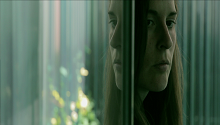Michel Goossens
Michel Goossens studied Biology in the Netherlands and extensively travelled the world, living in Australia and Canada, before settling in Barcelona. Despite an early interest in film, avidly collecting films and working in local cinemas, Michel did not start actively making films until 2003, when the advent of digital equipment made filmmaking more accessible. While making films, Michel attended various evening and weekend certificate programmes in Canada, Portugal and London to develop his skills.
His works are a combination of short narrative and conceptual films. They show the influence of his scientific background, with a shared tendency to deconstruct and view topics in their separate elements that leads to an abstract style of filmmaking.
A number of his works have been presented on the film festival circuit, most notably his award-winning short narrative film Exit, which played at a few dozen festivals worldwide.
www.micanproductions.com
Michel Goossens
In the work of Michel Goossens, as in that of artists like James Benning or Reynold Reynolds, we see the manifest influence of his scientific baggage. In videos like Cloud Tank, Watching Smoke and Watching Water, we see how Goossens analytically observes patterns that are repeated in nature or the complexity of atmospheric phenomena. Unlike Benning, however, who self-confessedly has “never been interested in the big score”, Goossens positions himself halfway between storytelling and experimentation, showing that storytelling can be experimental and that experimentation can tell stories. Whereas in the works cited above, close observation of the repetitive perpetual movement of nature leads the viewer to a deep state of concentration similar to hypnosis, in others, like Exit, Grief or Ego, Goossens’ curiosity and fascination with the functioning of the intricate human psyche prompts the same viewer to ask questions. Who are these characters? What is their past? And their present? Why do they act the way they do?
Both stances (analytical observation of nature and presentation of a fictional plot and characters about whom we know little or nothing) aim—and manage—to question the viewer’s perception of reality, creating a new way of looking and listening.
Blurring the limits that Bill Nichols established to define modes of representation in the documentary (poetic, expositive, observational, participatory, reflexive and performative), Goossens opts for a hybrid approach to the genre, favouring the predominance of one characteristic or another depending on the moment. In Wheel, for example, the director sets his gaze on something as apparently trivial as a fairground big wheel. The viewpoints of the big-wheel-rider and the viewer are interspersed; we see the big wheel from the ground and from the sky. Goossens, seduced by the functioning of the mechanical mastodon, analyses it with scientific curiosity, in this case relegating human beings to the role of mere extras.
However, we have established that Goossens is interested in fiction. In fact, much of his work centres in this field. In Exit, a woman called Kate wakes up, disoriented, in a hospital bed. An unknown man explains that she has passed away and that she has to accept her death. This is the starting point for a narrative which, like dramatic science fiction, reflects on the complexity of human identity, love of life and the difficulty of overcoming trauma. At the presentation of the short at the Philip K Dick European Film Festival, Goossens explained that it was inspired by a scientific article about life after death, written a few years previously by a renowned cardiologist. Here again we see the questions, the analytical gaze and the interest in science, though now combined with the creation of a dramatic fiction which, on this occasion, distances the director from the documentary genre, using a plot that encourages the viewer to question reality/realities.
Other examples of Goossens’ relationship with fiction are Ego and Grief, two works that form a kind of diptych (made in the same year with the same actress and same approximate length) about confrontation. The confrontation with our various personalities and the struggle between them. The confrontation with our past and the inevitable dichotomy: to bury memories and try to forget them, or to accept them as an inherent part of our being?
Marla Jacarilla (visual artist and writer: www.marlajacarilla.es)










